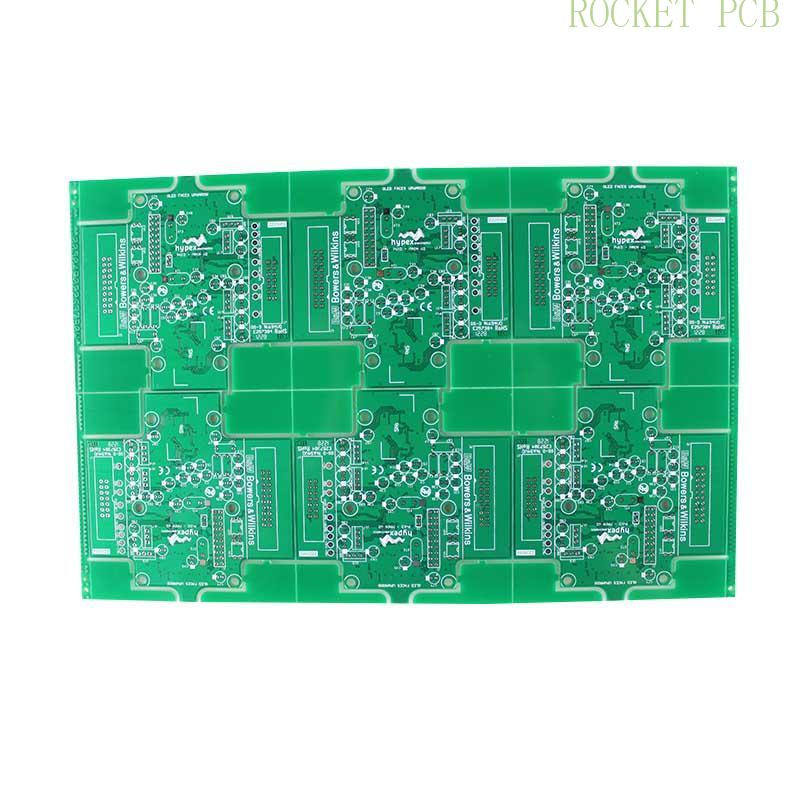How to Select Materials for Your PCBs
Material, usually substrate material as far as PCB (Printed Circuit Board) is concerned, plays an important role in PCB since it carries its leading functions and properties. In addition, PCB material allows PCBs to conform to some high and special requirement set by the products or projects they’ll work for. Furthermore, it is beneficial to reduce cost and improve products’ reliability when optimal material is selected.
When it comes to material for PCBs, high Tg should be picked, which should be higher than the working temperature current runs.
Elements to be Considered in PCB Material Selection
• Glass Transition Temperature (Tg)
Tg refers to the temperature at which material is converted into glass state. Standard Tg stays above 130℃ while high Tg above 170℃ and mid Tg above 150℃.
• Coefficient of Thermal Expansion (CTE)
As the temperature of substance rises, substance will suffer from expansion or shrinking. When it comes to PCB fabrication, since CTEs in X, Y and thickness are different, PCB will tend to become deformed. Furthermore, plated hole may suffer from breakage or components will get damaged. Therefore, CTE of substrate material should be sufficiently low.
• Heat Resistance
PCB is required to be heat resistant. Generally speaking, PCBs should feature heat resistance of 250℃/50s, which also works on material.
• Flatness
PCB is required to feature excellent flatness. As far as SMT assembly is concerned, PCB is required to feature warpage lower than 0.0075mm/mm.
• Electrical Performance
High-frequency circuits call for PCB material with high dielectric constant and low dielectric loss. Besides, insulation resistance, dielectric strength and Arc resistance should be compatible with product requirement.

Correlation between PCB Material Selection and Product or Industry
PCB material selection plays a decisive role in contributing to product reliability and is also determined by industry particularity and requirement.
Commonly-used electronic products call for FR4 epoxy fiber glass substrate. After all, the products don’t call for special requirement on flexibility, temperature and density.
Electronic products calling for higher requirement on environmental temperature or flexibility, polyimide glass fiber substrate is applied. For high frequency, PTFE glass fiber substrate should be applied. For PCBs calling for higher requirement on thermal dissipation, metal base substrate should be used.
Classification of PCB Substrate Material
Copper Clad Laminate (CCL) is most commonly used as PCB substrate material. CCL is usually composed by copper foil, resin and base material and also covers a couple of categories.
• Rigid CCL
a. Paper-Based Phenolic CCL
Paper-based phenolic CCL has the longest history, containing classes of FR2, FR1, XXXPC, XX, XXP, X, XP, XPC etc. It features such low cost that it is massively applied in consumer electronics like audio or video and single-side PCBs account for the most.
b. Paper-Based Epoxy CCL
Paper-based epoxy CCL is massively applied in TV, PC, printer, calculator, telecommunication and power substrate. Besides, it is also used in through-hole PCB used for consumer electronics.
c. Paper-Based Polymer CCL
Paper-based polymer CCL is anti-CAF and features high-quality tone, so it is mainly applied in color TVs or stereo. It is created in Japan but is stopped from being manufactured later.
d. Fiberglass Epoxy CCL
Due to its reliability, fiberglass epoxy CCL is most massively applied in CPU, OA equipment, telecommunication and medical care products. Moreover, owing to its electric insulativity, heat resistance, dimensional stability, wet resistance and chemical resistance, fiberglass epoxy CCL is largely used in double-sided PCBs containing through holes. With the tendency of high density of PCBs, fiberglass epoxy CCL is also used as material in multiple-layer PCBs as core material and prepreg etc.
e. Composite CCL
The resin in composite CCL mainly comes in epoxy resin and polyester resin. Composite CCL primarily works on single-sided PCBs and through-hole PCBs. CEM-3 composite CCL is commonly used in some certain industries due to its reliability, heat resistance, moisture resistance, and dimensional stability. Moreover, composite CCL works more suitably for SMT assembly on thin PCB boards.
Get Your PCBs Prototyped and Fabricated: Higher Reliability and Lower Cost
Rocket PCB provides quickturn Prototype PCBs and high-quality Standard PCBs based on the excellent balance between RELIABILITY and COST as far as electronic products are concerned. With more than a decade’s running experience, Rocket PCB fully understands your demands and expectations on ROI. Our professional solutions and quick response lead you towards high efficiency and high yield.





